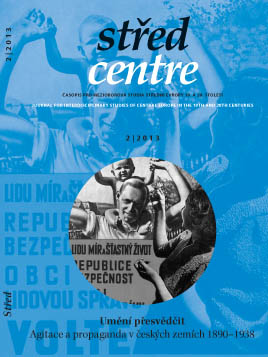Ku předu, ženy! Reprezentace feminity na stránkách Ženských novin před obecními volbami 1919
Forward, Women! Representations of Femininity in the Social Democratic “Women’s Newspaper” Before the 1919 Municipal Elections
Author(s): Marie V. FouskováSubject(s): History
Published by: AV ČR - Akademie věd České republiky - Masarykův ústav
Keywords: Women; Gender; Election Campaigns; interwar Czechoslovakia; Social Democrats
Summary/Abstract: The article analyses election campaign in the Czech Social Democratic Women’s Newspaper before the municipal elections in June 1919. The municipal elections were the first opportunity for Czech women to exercise their new right to vote, and as such, presented a new challenge for political parties that had to find ways to appeal to their new female voters. The Women’s Newspaper started to be published in January 1919 and served the dual purpose of educating poor women and mobilizing them for Social Democracy. It built on communication and argumentation strategies employed in the socialist women’s movement before the war: motherhood as an argument for the political participation of women, valorisation of domestic tasks. It used the war experience to reassert women’s right to political participation, buttress their self-esteem and above all, to mobilize women against the parties who were supposedly responsible for the disaster of the war and/or who profited from the war: the bourgeois, wealthy farmers and landowners and the Catholic Church. It offered their readers normative representations of women and women’s political activity which were based upon the image of woman as a mother who wants to work selflessly for the good of the nation (the working class). However, the paper paid close attention to the actual socio-economic needs of poor women, though it framed those needs as matters of the public good. Negative images of class adversaries, who were often represented as women, served to bolster poor women’s class solidarity over any possible gender solidarity. These images were built using explicitly gendered critique of these female adversaries for failing to meet the norms of femininity: bourgeois women were presented as selfish and uncaring mothers; wealthy farmer’s wives as greedy women who placed money over the lives of children. Thus was the language of gender used to assert the moral superiority of poor working women and to strengthen women’s solidarity within and with the working class.
Journal: Střed. Časopis pro mezioborová studia Střední Evropy 19. a 20. století
- Issue Year: 5/2013
- Issue No: 2
- Page Range: 30-56
- Page Count: 27
- Language: Czech

